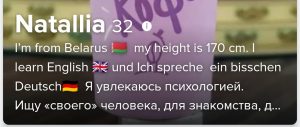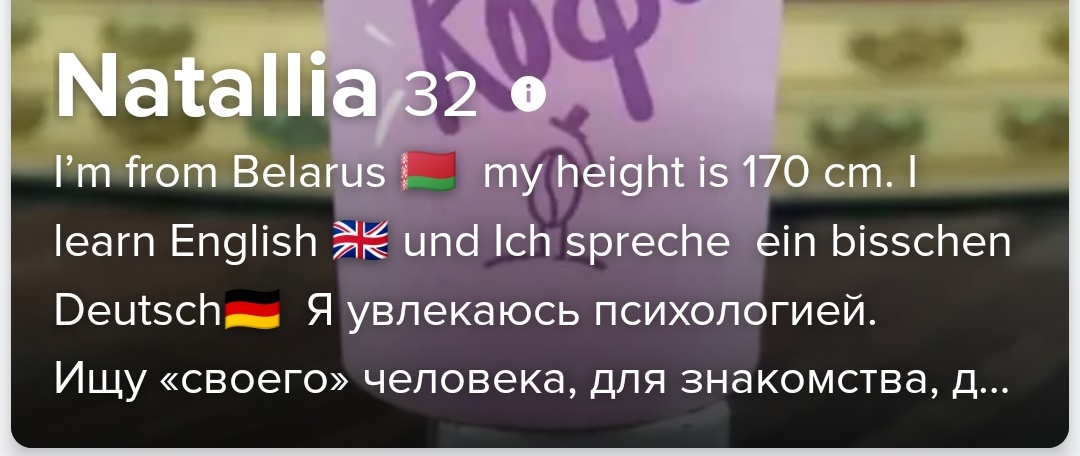In theory, Belarusian and Russian have equal status in Belarus as co-official languages. In reality, however, public life is dominated by Russian. Belarusian was initially made the sole official language when Belarus gained independence from the Soviet Union. But Russian was made co-official as a result of a referendum in 1995, the year after current president Alexander Lukashenko came into power. Lukashenko’s policies have generally been regarded as pro-Russian, with the effect of suppressing the use of Belarusian in public life outside of a few niches—echoing the russification policy of the Russian Empire and the post-1930s Soviet Union.
In the 2009 census, 60.8% of Belarusians declared Belarusian and 37.0% declared Russian to be their native language (in 1999, the shares were 85.6% and 14.3% respectively). But for the language spoken at home, the figures were reversed, with 69.8% declaring Russian and 26.1% Belarusian (in 1999, the shares were 58.6% and 41.3% respectively). Approximately 29.4% of Belarusians could write, speak, and read Belarusian, while 52.5% could only read and speak it.
Belarusian and Russian, along with Ukrainian, are closely related East Slavic languages, all descending from the Old East Slavic spoken in Kievan Rus’. After the fall of this medieval state to the Mongols in the 13th century, its language developed into Ruthenian in the western part that came under the rule of the Grand Duchy of Lithuania and into Russian in the eastern part that remained under Mongol rule. In the eastern part, the Grand Duchy of Moscow gained power over its neighbours and overthrew the Mongols in 1480, laying down the beginnings of the Russian state. The Grand Duchy of Lithuania united with the Kingdom of Poland in 1569 to form the Polish–Lithuanian Commonwealth, and the southern Ruthenian-speaking territory passed into the Polish crown while the northern part remained under the Grand Duchy. Ruthenian developed into Belarusian in the north under the Grand Duchy and into Ukrainian in the south under the Polish crown.
After the partitions of the Polish–Lithuanian Commonwealth in the end of the 18th century, the Belarusian-speaking lands came under the Russian Empire. However, cities were mostly Polish- or (increasingly) Russian-speaking, and Belarusian was mostly a language of the peasants in the countryside. It wasn’t even until the early 20th century when Belarusian was standardized, far behind Russian and Ukrainian.
Today, Belarusian, Ukrainian, and Russian are all written in the Cyrillic alphabet. Belarusian is notable for using the letter ў to write the sound [w]; it also uses the letter і to write the sound [i], like Ukrainian but unlike Russian. Belarusian spelling is more phonetic than Russian. So when an unstressed /o/ is pronounced more or less close to [a], it is written as o in Russian but as a in Belarusian to reflect the pronunciation. Many Russian speakers pronounce the ‘soft’ versions of t and d as soft affricates ts and dz, but Russian spelling keeps t and d while Belarusian writes these as ts and dz.
As one might guess from the low percentage of the Belarusian population that can actually write in Belarusian, not to mention the fact that Russian is seen as more urban, cosmopolitan, and international than Belarusian, Tinder profiles in Belarus are mostly in Russian with a minority in English. A fairly extensive search all over Belarus failed to turn up a single Tinder bio in Belarusian. In neighbouring Western Ukraine, bios in Ukrainian rather than Russian are the norm, illustrating the contrasting status of Belarusian and Ukrainian in their respective lands.
This does not mean there is no trace of the Belarusian language on Tinder. Some users do claim to speak Belarusian in their bios:

There are other traces of Belarusian as well. Take this Tinder user named Krystsina who speaks Russian and English according to the flag emojis:

While there is no mention of Belarusian in this bio, the name is a romanization of the Belarusian form Крысціна Krystsina (reflecting the hardening of r and the the transformation of soft t to ts) rather than the Russian form Кристина Kristina. So you have the interesting situation of someone not including Belarusian as one of her languages nevertheless using a romanized name based on the Belarusian form.
Here is another interesting situation:

The name is written in Russian as Ольга Ol’ga on this profile. However, the Instagram handle contains “Volha”, a romanization of its Belarusian equivalent Вольга Vol’ha (with a prothetic v– and the Belarusian pronunciation of г as h [ɣ]). Interestingly, “Bohdan” seems to be a romanization of the name which is halfway between Богдан Bogdan in Russian and Багдан Bahdan in Belarusian—if anything, it looks like the romanization for the Ukrainian Богдан Bohdan, or the common variant Bohdan of the Polish name Bogdan.
Let’s look at some more examples of romanized names following the Belarusian rather than the Russian form.

This is Belarusian Таццяна Tatstsyana (or Тацяна Tatsyana in the Taraškievica orthography still preferred by those who don’t accept the 1933 orthography reform) corresponding to Russian Татьяна Tat’yana. Note how the soft t turns into ts.

This is Belarusian Ірына Iryna corresponding to Russian Ирина Irina, with the Belarusian hardening of r. Hard consonants are followed not by i but by y in both Belarusian and Russian, so we can see that the Russian r is soft but the Belarusian r is hard.

This is Belarusian Аксана Aksana corresponding to Russian Оксана Oksana. As this name is stressed on the second syllable, the unstressed first vowel is pronounced with an a-like sound in most dialects of Russian, but it is still spelled o. Belarusian however writes it as a.

This is Belarusian Наталля Natallya corresponding to Russian Наталья Natal’ya or Наталия Nataliya. Note the double l in Belarusian.

This is Belarusian Ганна Hanna corresponding to Russian Анна Anna. The fact that Belarusian turned g into the soft fricative h [ɣ] means that it can imitate the h-like sound of the original Hebrew name Hannah (חַנָּה Ḥannah), while Russian which doesn’t have this soft sound always drops the h and imitates the Greek form Ἄννα Ánna. Ukrainian, which also has a soft h, uses both Ганна Hanna and Анна Anna, but Belarusian seems to have an overwhelming preference for the former.

This is an interesting one, as it could be the romanization of a Belarusian name that looks like Ангеліка Anhelika. However, this and the Russian counterpart Ангелика Angelika are usually found as transliterations of the name Angelika as used in German, not as native names. The variants Анжаліка Anzhalika in Belarusian and Анжелика Anzhelika in Russian, recalling French Angélique, are far more common as native names. So it is unusual to find a Belarusian named Anhelika. We cannot completely rule out the possibility that this is in fact a romanization of Russian Ангелика Angelika but pronounced in the Belarusian accent of Russian, which also makes the g soft like h as in Belarusian.
